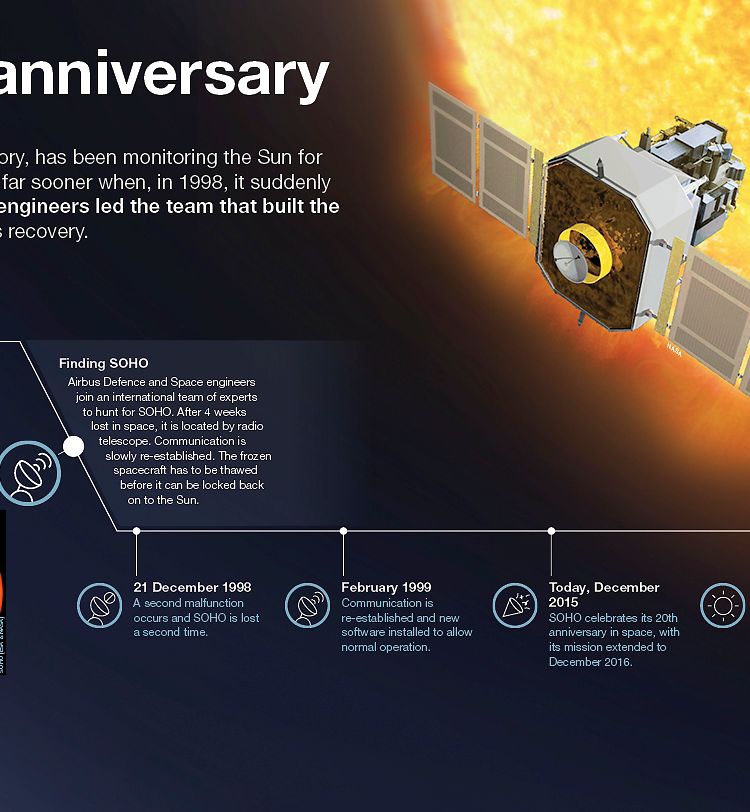Summary
- - Launched in 1995 - Originally meant to last 2 years, will operate at least until December 2016 - Mission: To study the Sun and help predict space weather - Airbus Defence and Space led the team that built the SOHO spacecraft
In 1995, SOHO, the Solar and Heliospheric Observatory, set out to study the Sun and the solar wind. Originally a two-year long joint missionbetween NASA and the European Space Agency (ESA), it has been operational for more than 20 years.
SOHO has been monitoring the Sun with 11 different instruments from a vantage point 1.5 million km out in space, on the sunward side of the Earth. It has brought about a revolution in solar science. Apart from discoveries about flows of gas inside the sun, giant 'tornadoes' of hot, electrically charged gas, and clashing magnetic field-lines, SOHO has proved its worth with early warning of eruptions that could affect the Earth’s climate.
Researchers came close to losing the spacecraft, built by Airbus Defence and Space-led team, in June 1998, after a sequence of incorrect commands during what should have been a routine maneuver. SOHO was in the wrong position to receive communications from Earth and not responding to commands.
It took about three months to recover and the spacecraft lost two gyroscopes responsible for attitude control. The remaining gyroscope failed a few weeks later, forcing mission managers to develop a new way of keeping SOHO stable. The observatory has operated flawlessly ever since, delivering images and data that have substantially advanced our understanding of the Sun and the solar-terrestrial relationship.
SOHO’s mission has been extended once again to December 2016. When its work is done, it will be followed by Solar Orbiter. This new spacecraft, which is being built by Airbus Defence and Space, is expected to take mankind closer to the Sun than any space probe to date.
